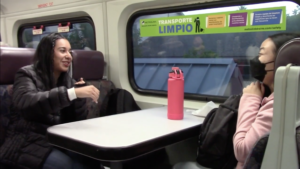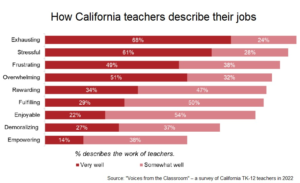Americans can’t get enough of true crime. Why? And is that healthy for our culture?
From unsolved mystery cases, to confession tapes, and investigations. America’s appetite for true crime content is exploding.
For many years, true crime has been the subject of books, TV shows, movies, documentaries — and now podcasts — with a huge consumer base and significant influence. And now the true crime genre has moved into podcasting.
According to a YouGov survey, nearly half of Americans say they enjoy true-crime content and one-third consume it at least once a week.
“There’s something about true crime, much like horror, which can elicit a response in us that is almost like going on a roller coaster,” said podcaster and forensic psychologist who goes by the name “Dr. Scott” on his true crime podcast, L.A. Not So Confidential. “This idea of curiosity about human behavior and not only the human behavior we see criminals perpetrating on their victims but also the darker side of ourselves …
“We are curious about how people would do that,” Dr. Scott continued, “how could they be in a place where they would do something to another person, ‘Am I capable of doing something?’ All of those factors have really contributed to the popularity of this media.”
“It’s not just a morbid curiosity, it’s about human beings and human nature,” said Dr. Richard Lettieri, a forensic neuropsychologist and psychoanalyst. “Part of the true crime is a way of understanding that piece of other people and themselves. You can get obsessed with it but it’s almost like a survival mechanism to get a better handle on how to understand the risks.”

But some worry true crime stories can be retraumatizing to survivors and desensitizing to viewers.
“True crime as it is not going anywhere,” said Kim Goldman, a victim advocate whose brother Ron was killed alongside O.J. Simpson’s estranged wife in 1994. “So now we need to educate people on how to be consumers and how to be sensitive and respectful knowing that you are consuming someone’s most horrific moments unfold for your own personal entertainment.”
According to the New Yorker, this fascination is actually centuries old. In the 1800s, newspapers printed detailed accounts of murder inviting readers to evaluate the evidence for themselves.
In more modern times, podcasting has become a new medium for true crime.
True crime fan Selena Sekulic finds the backstory behind these stories fascinating.
“I think there are a lot of commonalities behind a lot of these criminals in terms of their upbringing and their mental health,” Sekulic said. “I think it’s interesting to see the sequencing of events and how it’s all unfolded.”
“I started listening to true crime podcasts ever since I can remember,” said Cindy Abarca, a student at California State University Northridge. “I have always found that subject very interesting to me. Though I would never watch an unsolved one because it leaves me unsettled because the serial killer can still be out there and we don’t know who it is.”
According to Rolling Stone, ten years ago podcasts were obscure. Now, podcasts are an integral part of the media landscape, whether they cover a new case every episode or present a story over the course of a season.
One example: the first season of Serial, a 2014 podcast that investigated the case of Adnan Syed, who maintained his innocence despite being convicted of murdering his former girlfriend Hae Min Lee.
“Serial’s changed the game, racking up hundreds of millions of downloads worldwide, renewing the true-crime genre and transforming a rising digital format that was both commercially unproven and journalistically untested,” reporter Daniel Arkin wrote for NBC News.
In the show’s first season, Serial host Sarah Koenig re-investigated the case of Lee’s murder, raising urgent questions about the justice system. Eventually, a court threw out Syed’s conviction in that case, prosecutors in Baltimore dropped charges against him, and Syed was released from prison after 22 years — and the podcast was a big reason why.
Steve Kelly, a lawyer for the Lee’s family, said the victim’s relatives are “very hopeless about any justice for Hae.”
“They feel like Adnan Syed is an international celebrity,” Kelly told People Magazine. “The story is about him. He’s been made to be a hero in the media. And Hae Min Lee is not part of that narrative.”

Casey Fiesler/Flickr/Creative Commons
Lee’s family isn’t alone. Advocates worry that the producers of true crime content are insensitive to the concerns of victims or their families.
“We have never been able to consume true crime in a way we are able to consume it now — and it’s 24/7,” said Renee Williams, who serves as the executive director for the National Center for Victims of Crime. “It’s leading a drive to look for more salacious material to be constantly putting things out and that’s a dangerous place to be.”
Kim Goldman co-chairs the board for the National Center for Victims of Crime. O.J. Simpson was charged but later acquitted of murder charges in her brother’s killing.
Kim also authored a book, Media Circus, which later became the title of her podcast. Goldman gives her podcast platform to victims and their families, allowing them to tell their stories in their own words and terms to change the narrative surrounding true crime storytelling.
“The victims and survivors are often cast aside when we do storytelling about high crime or true crime,” said Goldman. “So it’s important for me to give voice back to the people whose story everyone is consuming and give us the control that was taken from us when our loved ones were killed. It’s important for me to make sure that we are always paying attention to victims and survivors”
Goldman says there needs to be a shift as consumers of true crime stories need to be respectful and sensitive to the victims and their families.
People who haven’t been victims of crime themselves “get to turn that off and you get to click on the next story [while] we are still sitting in our stuff,” Goldman said. “I think if we start to shift the narrative in terms of how you can be a discerning listener, more productive in your community, how you can be a volunteer, how to be more involved, and advocacy then we can start to allow ourselves to be more responsible as consumers.”
Williams says true crime storytelling has undergone a shift, but you should still respect victims and their families when they have had enough, as they are not characters from a story.
“True crime can be productive and it’s not going away,” said Williams. “There has been a shift recently to focus less on the perpetrators and to romanticize the perpetrators and that’s a good thing,” said Williams.”
“I also think we forget,” Williams added, “for the victims and the victims’ families that they are humans and they’re not characters in a story.”
This story was produced by Giovani Reyes, Reyna Torres and Jennifer Valdez





